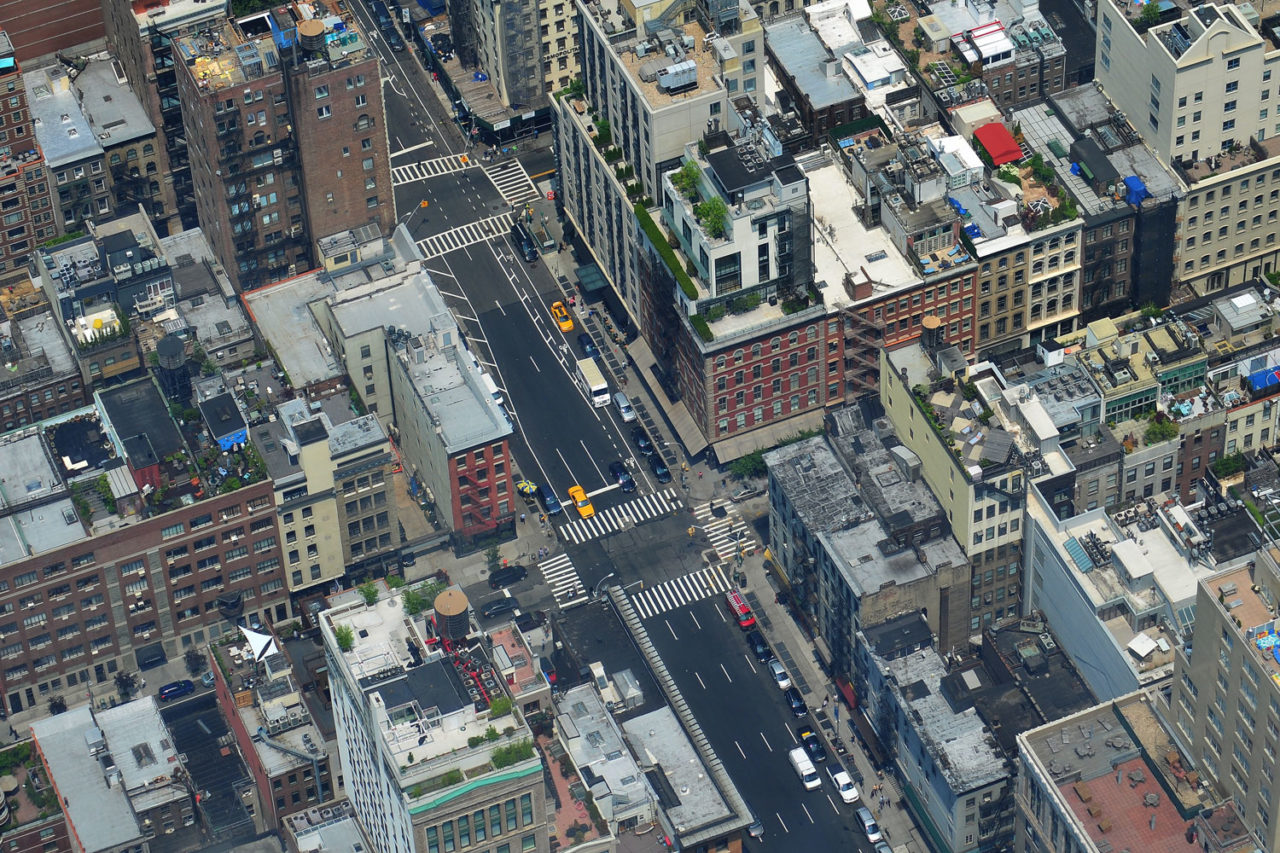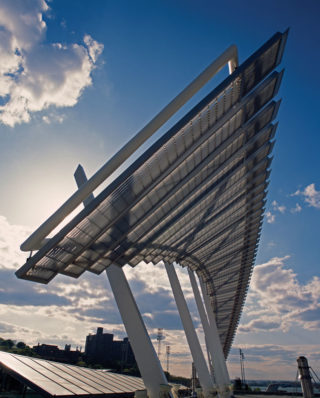
New York is constantly being recycled. A vet’s office becomes a restaurant, which gives way to a bank. An abandoned rail line metamorphoses into a park, a warehouse into apartments, a church into a concert hall. An abandoned pier acquires a skate park. In a living organism, one generation of cells replaces another, but their functions remain the same. In a big, dense city, the opposite is true: its component parts endure only if their functions are free to change. When a space has outlived its usefulness, it must adapt or go.
New York’s future depends on the usefulness of its relics. An ancient subway system must continue to serve as it always has (only better), or the city will degrade. But three other old urban dogs will have to learn new tricks: skyscrapers, stores, and streets. These elements are so basic and so pervasive that neighborhoods form and shift around them. And yet it’s not clear that they can bend to the future’s needs.
We have spent decades repurposing the architectural detritus of a time when America’s economy was based on making, shipping, storing, and selling…stuff. Cheap, sturdy, and standardized, industrial buildings turned out to be perfectly suited to uses that would have flummoxed the workers who first occupied them. You could punch a hole in the wall to bring in new machinery, or stick on another structure when the company grew. Mills, sweatshops, and box plants shared qualities—high ceilings, abundant square footage, and plenty of daylight—that later made them splendid homes, restaurants, boutiques, theaters, and museums.
Today’s monsters are more brittle. One day, perhaps soon, the new glass towers currently being polished to completion at Hudson Yards will be obsolete behemoths, their vast floors and expensive upkeep untenable in a work world that is sure to be transformed again in the next generation, just as it was in the last. How will the architecture fare when the consulting firms, media conglomerates, real estate companies, and financial giants that have yet to move in eventually decide it’s time to move on? Will these towers be treated like the juggernauts of the 19th century, as raw material for a world we can’t conceive? Or will they follow the fate of SOM’s Union Carbide Building at 270 Park Avenue, which J.P. Morgan Chase plans to tear down and trade in for something in a bigger size?
The storefront is already going through that identity crisis. Online shopping, global brands, and foaming real estate prices are propagating an epidemic of dark shop windows. When rents subside, restaurants, bookstores, and quirky boutiques will fill a few of those vacancies—but not all. As retail stumbles, trembling, into a turbid future, first-floor New York will have to find new purposes. Otherwise, street life will die and with it, the rest of the city.
However indoor New York changes, on the skyline or the ground, the public realm outside will need a rejuvenating treatment, too. The 20th-century model for an urban thoroughfare—two each of sidewalks, parking lanes, and traffic lanes—already seems cumbersome, dated, and unacceptably dangerous. Why should massive steel containers, either motionless and empty or moving and nearly empty, monopolize so much shared land, pushing pedestrians up against the wall? Those crisscrossed strips of open space predate the automobile and will surely outlast it—but figuring out how will require a massive, collective effort.
New York can continue to battle its way through disaster, depression, attack, and rapacity. But for that to happen, the subway will have to improve, and the next generation must figure out how to recycle our legacy of skyscrapers, stores, and streets. Maybe drones will ferry tomatoes from 80th-floor hothouses to storefront urban farmers’ markets, where customers can finger them for ripeness, then safely bike them home. It’s just a thought.










